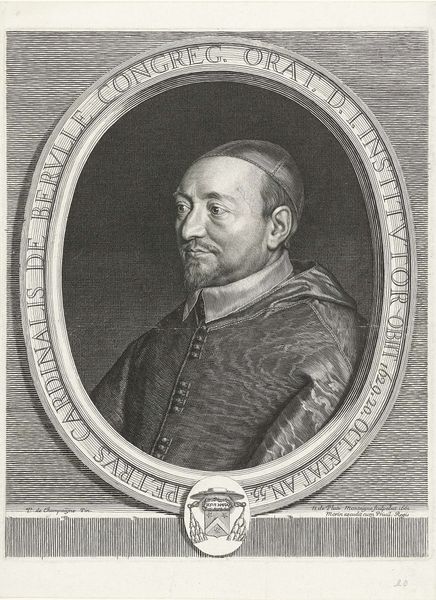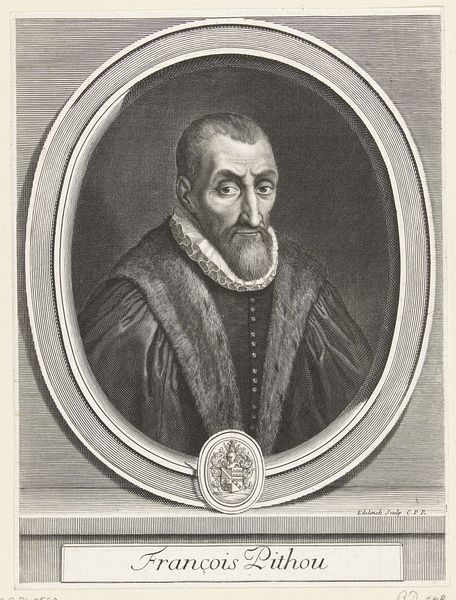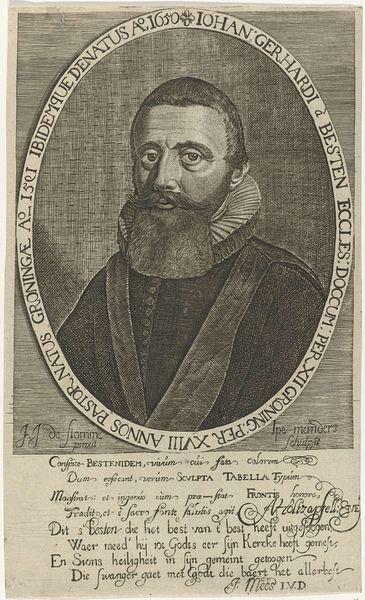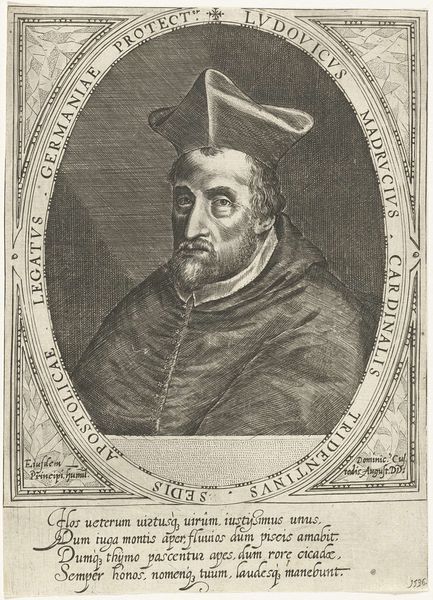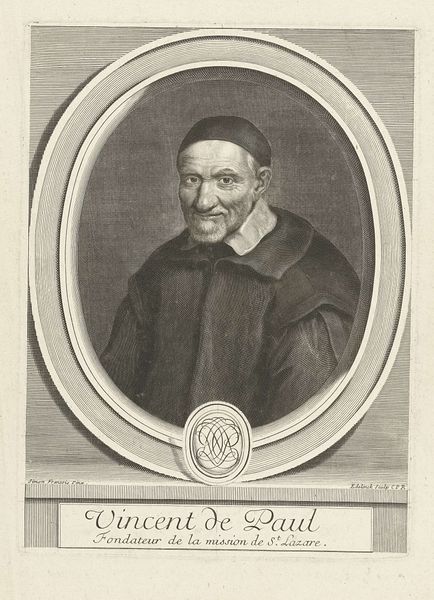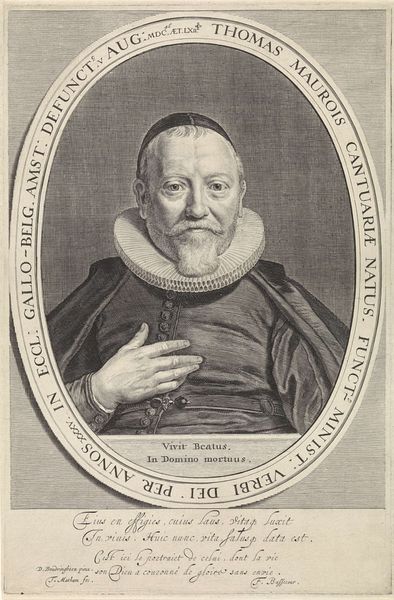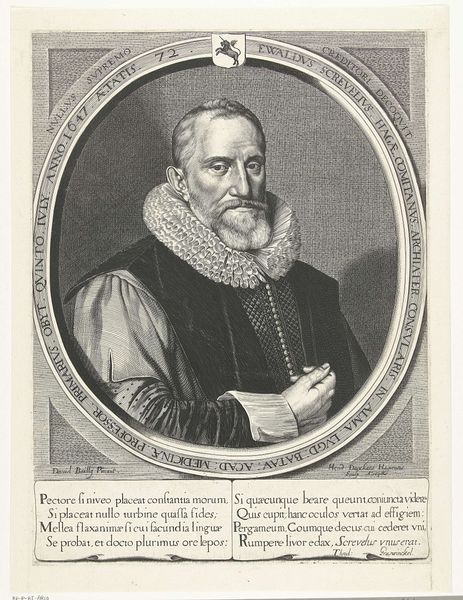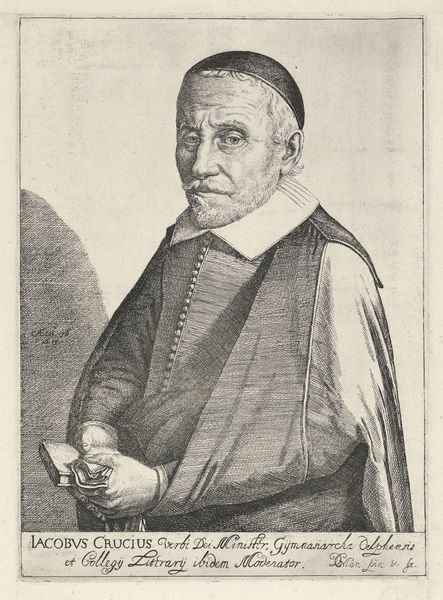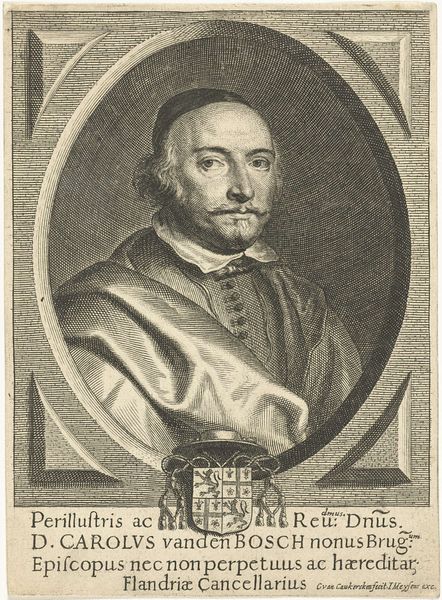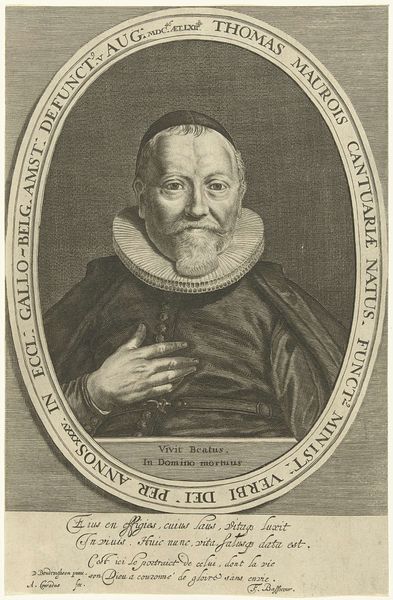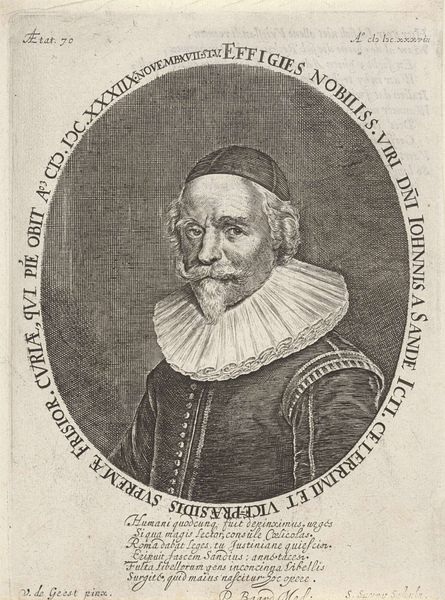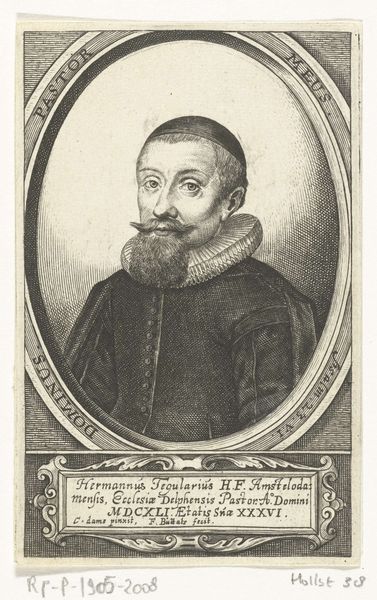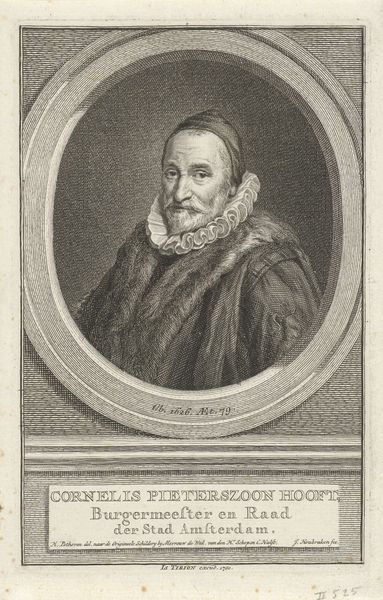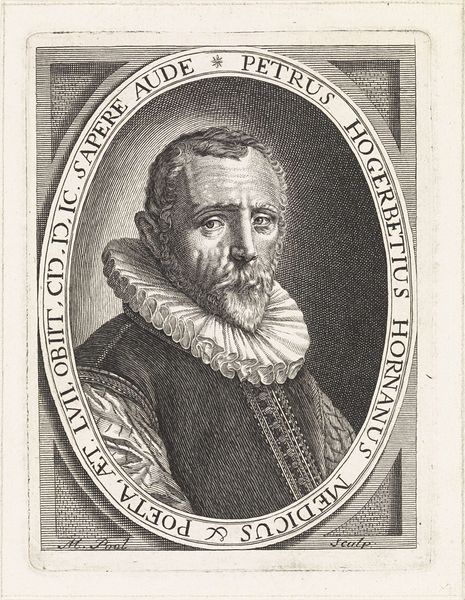
print, engraving
#
portrait
#
baroque
#
dutch-golden-age
# print
#
old engraving style
#
caricature
#
figuration
#
personal sketchbook
#
portrait reference
#
pencil drawing
#
line
#
academic-art
#
engraving
Dimensions: height 300 mm, width 200 mm
Copyright: Rijks Museum: Open Domain
This is an engraving of Jacobus Oleus made by Theodor Matham, likely in Amsterdam, in the middle of the 17th century. Oleus was a theologian, and this print reflects the important social role played by religious figures in the Dutch Republic at that time. Matham’s engraving employs visual codes that would have been instantly recognizable to a contemporary audience. The Latin inscription positions Oleus as a learned figure, while the olive branch symbolizes peace and prosperity, values closely associated with the Dutch Golden Age. Religious institutions shaped not only society but also artistic patronage. Clergy, like Oleus, commissioned works that reinforced their authority and standing. The printing press was a critical technology for disseminating not only religious doctrine but also the portraits of theologians such as this one, whose likeness served as a sign of social and religious authority. To better understand this portrait, we can turn to historical archives, theological texts, and studies of Dutch social history. Through these resources, we gain insight into the intertwined roles of religion, art, and society in the Dutch Republic.
Comments
No comments
Be the first to comment and join the conversation on the ultimate creative platform.
